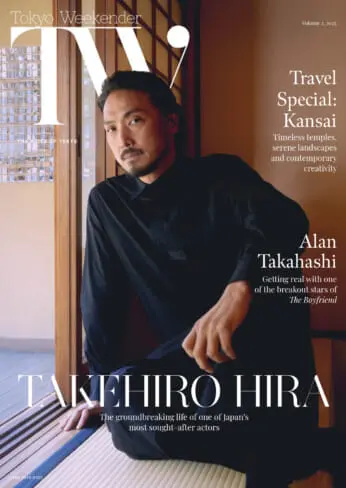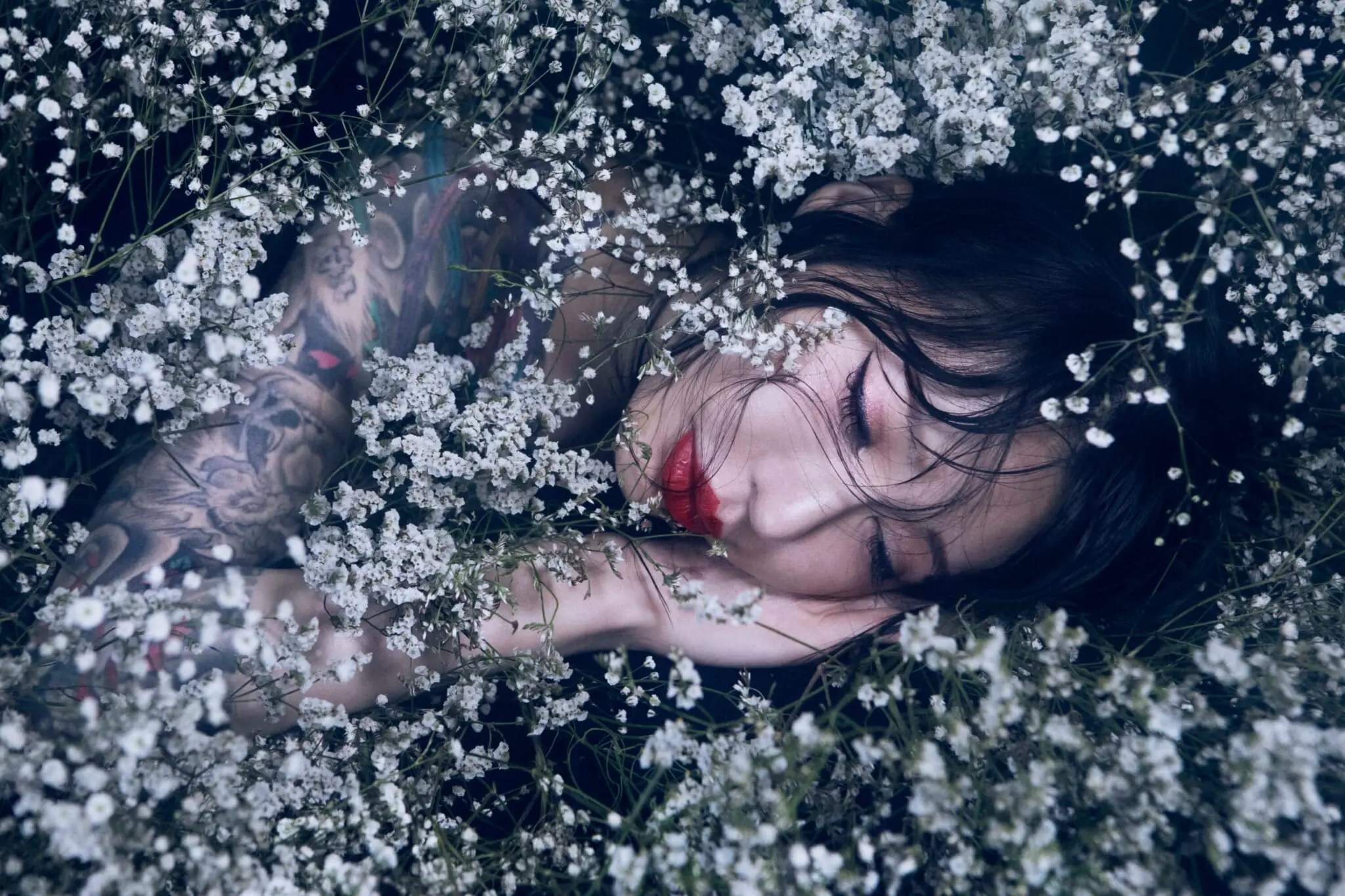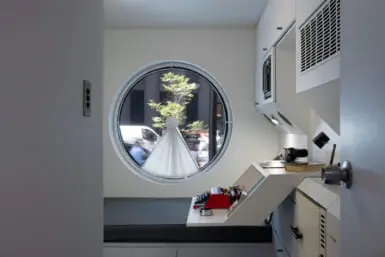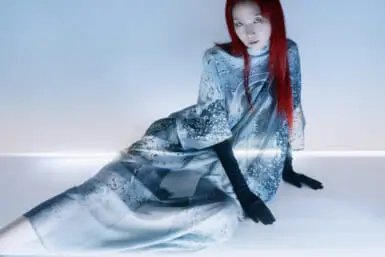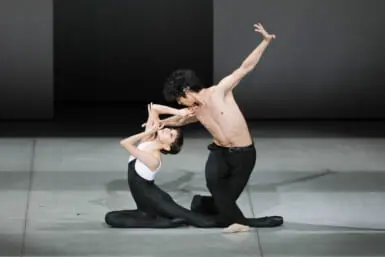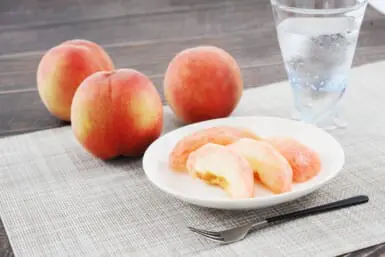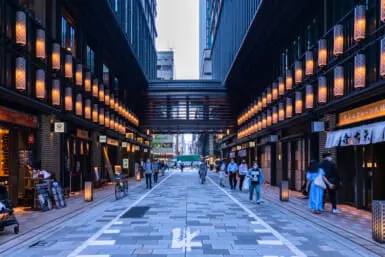This article appeared in Tokyo Weekender Vol. 3.
To read the entire issue, click here.
A real-life forest deity exists in Tokyo, sprinkling flowers and plants in unlikely places, intertwining them with roadside concrete, sprouting installations at hypermodern properties like Tokyu Plaza Ginza and Roppongi Hills, bringing splashes of nature to fashion events and contemporary art exhibitions. His name is Daisuke Shimura, and he goes by the whimsical title of “flower collaborator.” He doesn’t merely collaborate with artists and creators, though — his main collaborators are the plants themselves, and his works overflow with the uncontrolled wildness and ethereal beauty of the natural world.
But the garden path leading to his present occupation wasn’t straightforward. Shimura has a history of rebuking flowers, trial and error, trusting his feelings and ultimately making a name for himself through the power of plants.
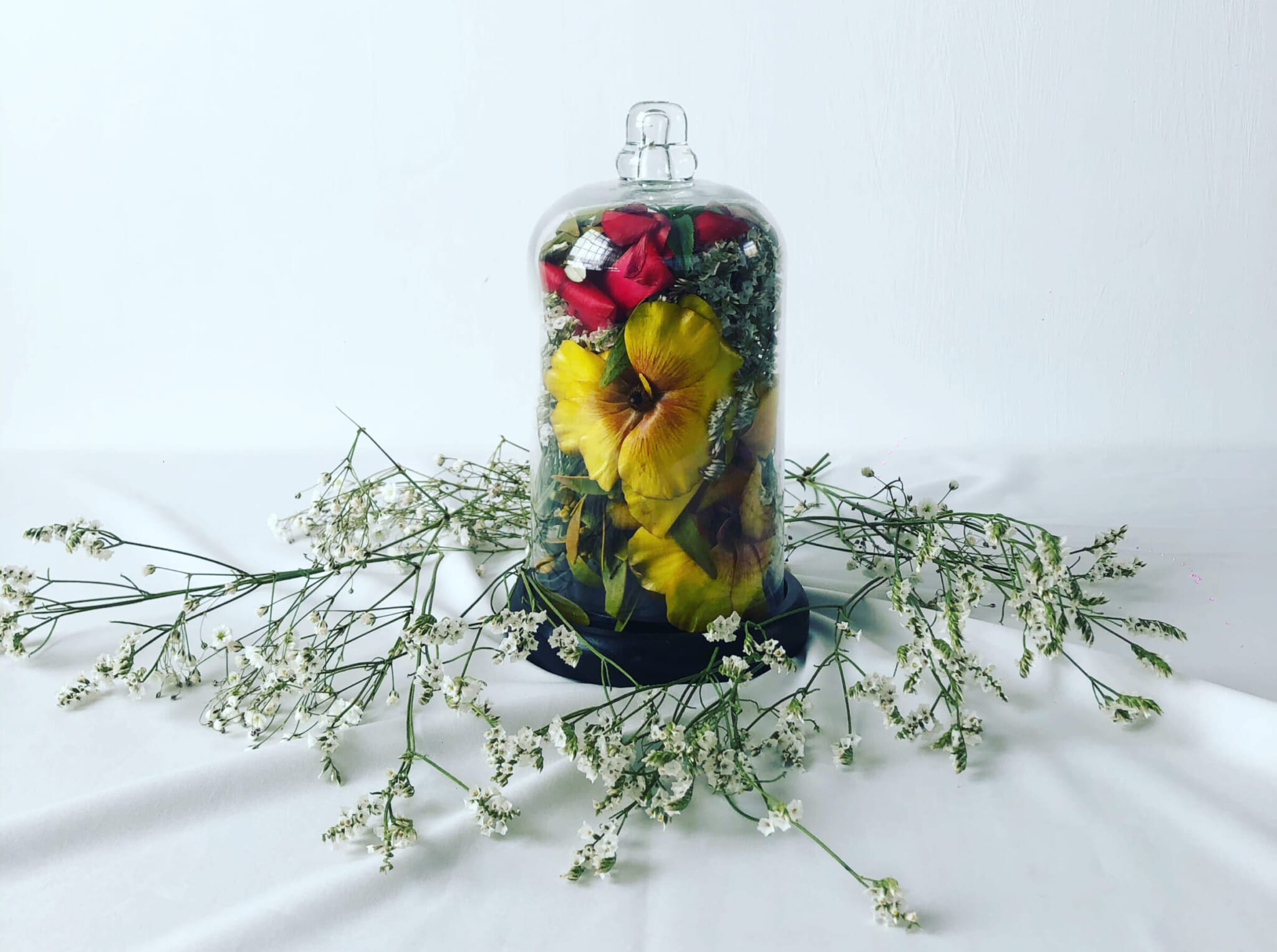
B.F. (Before Flowers)
The son of a flower artist, Shimura grew up around plants but never wanted a job with flowers himself. With his father running his own business, he was aware of the pressures that came with the industry. “I hated the flower industry, actually,” Shimura recalls. “My parents were able to buy me toys, but I had no family time.”
He continues, “My dad was always so busy, and he would only come home at a reasonable hour once or twice a week. When I went to my friends’ houses, I saw families spending time together in a way I never did.”
Instead, Shimura worked in the fashion industry for 10 years, struggling to be noticed in an oversaturated market. In 2007, when he was 30, he was at a crossroads, trying to figure out what to do next. Then, fate intervened: His father had his driver’s license suspended, and asked him to drive around, dropping off his floral deliveries for a couple of months. Around that time, his friend was celebrating a birthday, and Shimura realized he didn’t have enough time to put together a gift. Using some of his father’s extra flowers, Shimura threw together an arrangement, using what he had learned from watching his father for decades.
This casual act of gifting flowers turned out to be a momentous occasion in Shimura’s life. “She was so happy. I grew up around flowers, but I wasn’t attached to them at all. I felt they die so easily, and among all sorts of gifts, flowers weren’t that special to me. But my friend loved the arrangement, and my peers complimented my taste. I started wondering if I had a knack for arranging flowers,” he says. “That was when I decided I’d give flowers a shot. I gave myself 10 years to make a name for myself in this industry and joined my father’s company.”
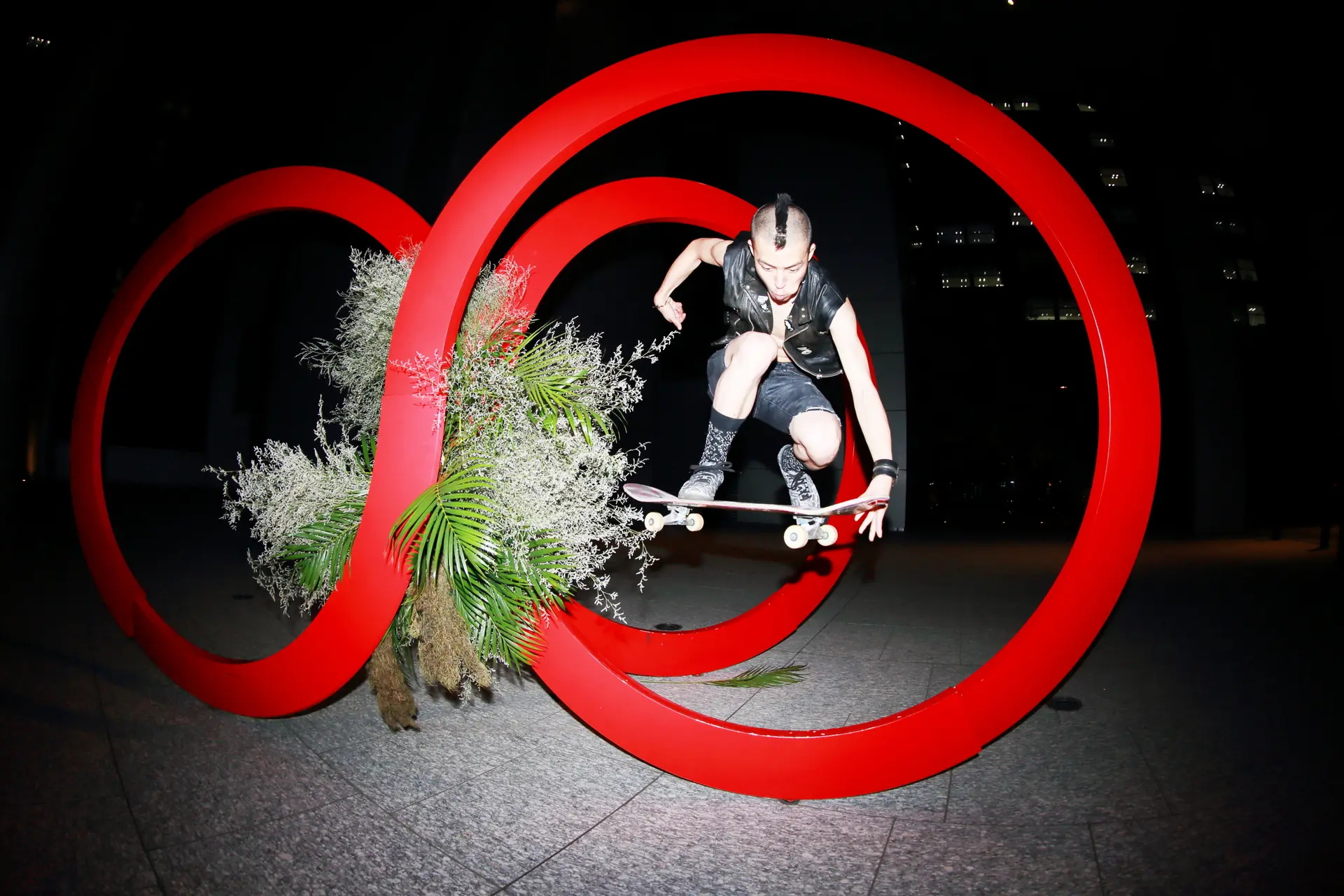
A Rose Among Thorns
He soon found that, in Tokyo, the floral industry is incredibly crowded, too. Japanese culture has a deep reverence for flowers, and the centuries-old art of ikebana has paved the way for a rich tradition of flower artistry that’s flourished for centuries — from the 15th century, when the first ikebana school was founded, to the present day, when modern floral artists specialize in innovative and avant-garde installations. “Ikebana masters actually have to get a special license, but you don’t need one to be a flower artist, so there are a lot of self-proclaimed flower artists,” Shimura explains.
“At first, I had no jobs,” he continues. “I would buy the cheapest flowers at the market, and everywhere I went, I would just make arrangements for people I met to try to leave an impression. I would ask them, ‘Do you have a vase?’ and arrange flowers for them on the spot. Because of that everyday effort, I gained the skill to make arrangements out of limited resources.”
Shimura didn’t just want to sell flower arrangements and make bouquets, though. He wanted to make art from flowers, creating living sculptures to be displayed at events, galleries and other public spaces. Over the years, he developed his own sophisticated, understated style that reflects his design philosophy. “My work aims to connect people. It adds ambience and a comforting presence without taking the spotlight. It’s simple, but actually hard to emulate,” he says.
But even as he grew more established as a flower artist, Shimura began to chafe at the title. He felt it didn’t accurately convey the work he was doing. “In 2018, I did my first exhibition, with a special effects makeup artist called Amazing Jiro,” he recalls. “Around then, I told him I didn’t like the title ‘flower artist’ and he thought about it and asked, ‘How about “flower collaborator?”’”
Shimura found that to be perfectly apt. “I work with so many artists and creators, and that title really resonated with me. Starting in 2019, I started working under the title of flower collaborator.”
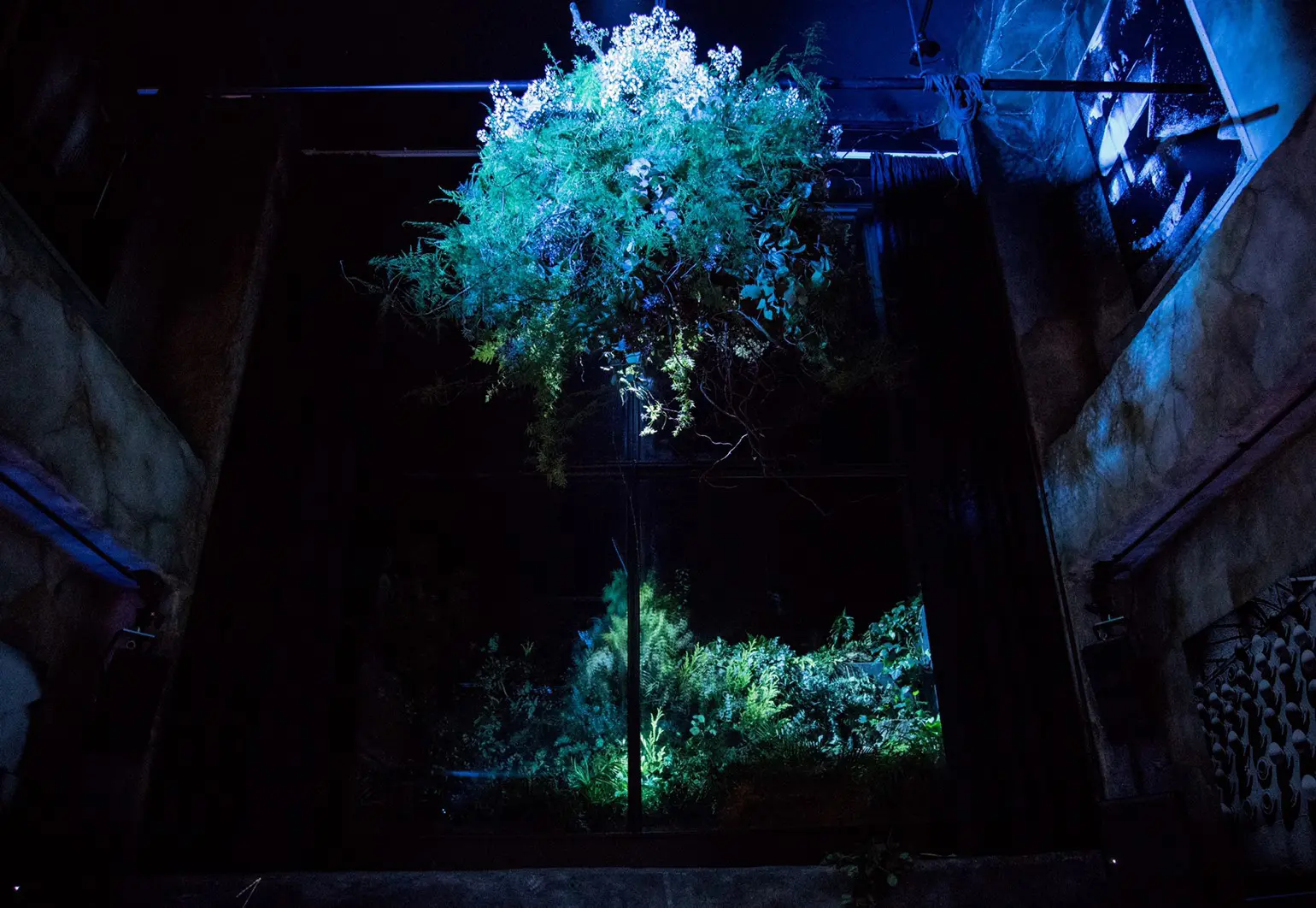
A Collaborative Effort
As a flower collaborator, Shimura works with many people from all different paths of life, but he’s most influenced by the very plants he puts on display. “I don’t really think about my art as Japanese or Western. In the scope of the Earth, I believe human lives and the lives of plants are equal,” he says.
Shimura’s deep respect for nature affects how he approaches his everyday life. “Humans may believe we are at the top of the food chain simply because we have intelligence or can speak languages, but in nature, we would be eaten instantly. Humans will inevitably go extinct at some point, and nature will return to its original form. Knowing that, I want to enjoy the current moment with loved ones. I want a world where we coexist with nature in a balanced way.”
Shimura believes nature to be an equalizing factor. “Regardless of East or West, I want people of all backgrounds to look at my works and just think, ‘Oh, that’s nice.’”
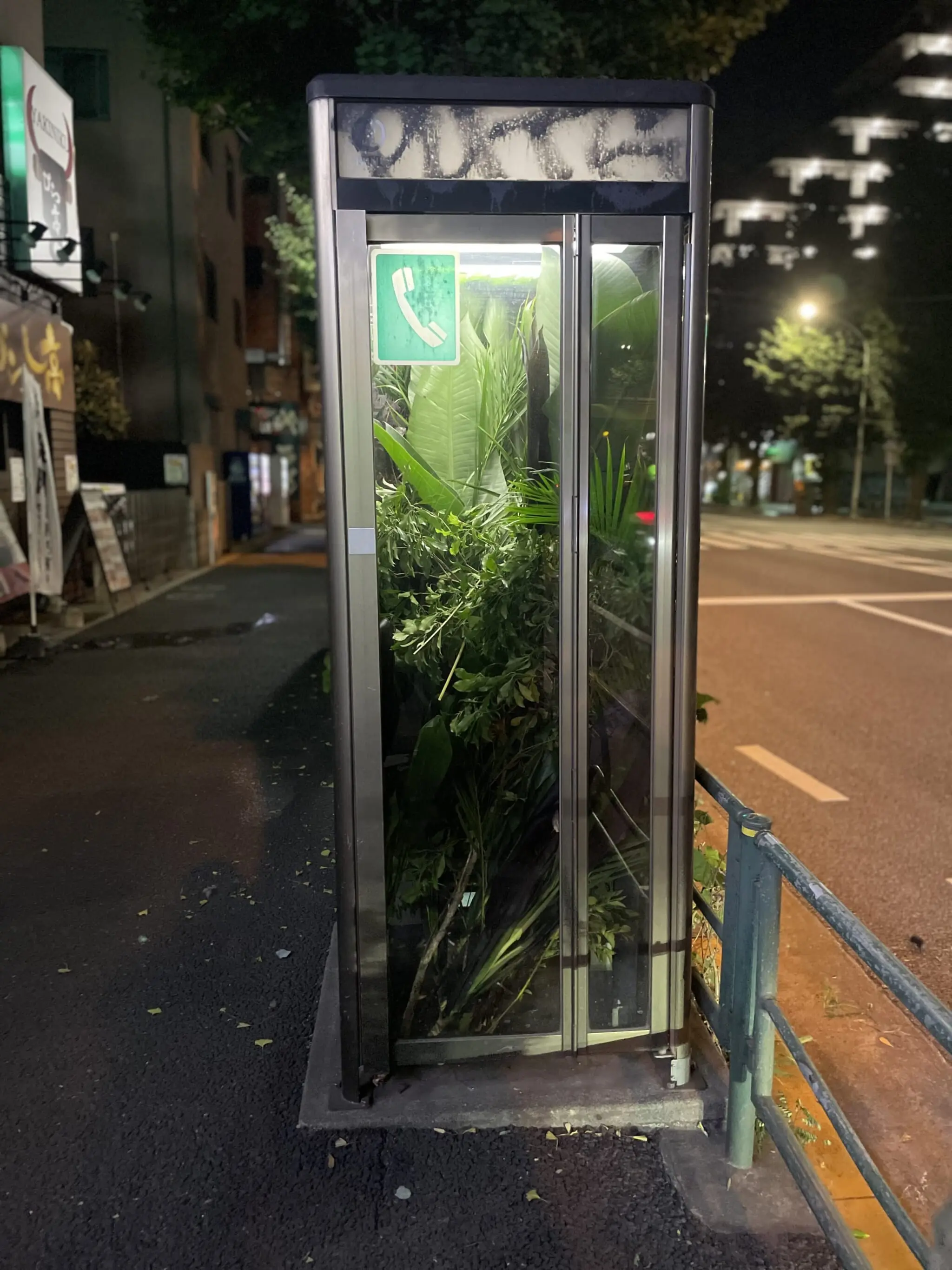
Nature’s Paintbrush
Shimura’s works often aren’t polished in the way many flower arrangements are. He’ll post Instagram photos of phone booths and metal railings overrun by plants, with the single caption, “flower bomb.” For many of his works, Shimura purposefully leaves roots and branches intact, revealing the plant’s entire structure and giving the illusion that it’s always been there.
To him, a blank room is a canvas, and flowers function like paint. “I like roses. Every shade,” Shimura says. “They have a big range of colors, and tens of thousands of varieties. When I was a teenager, there was a short period where I wanted to be a graffiti artist, but I realized I was bad at drawing. But I discovered I could use roses like paint.”
Looking to expand his floral expression, Shimura has his eyes set on foreign soil. “I want to make more pieces overseas. I’m blessed to have connections here, but I want to create something where people don’t know me, with local plants,” he says.
“I find that Europeans and Americans are more outward with their response, so they really openly compliment my work, which feels great. I want to go abroad, share the moment with local people and plants, and make a lot of friends abroad.”
You can find more of Shimura’s works on his Instagram at @daisuke_shim.
